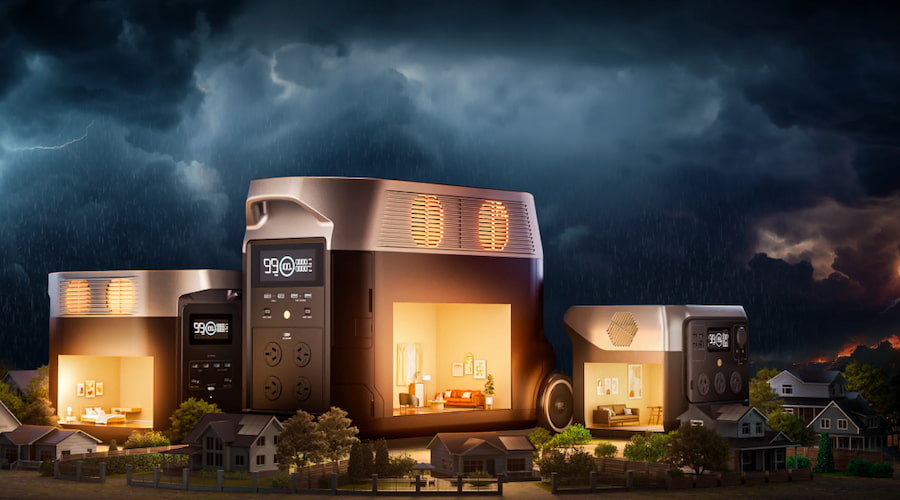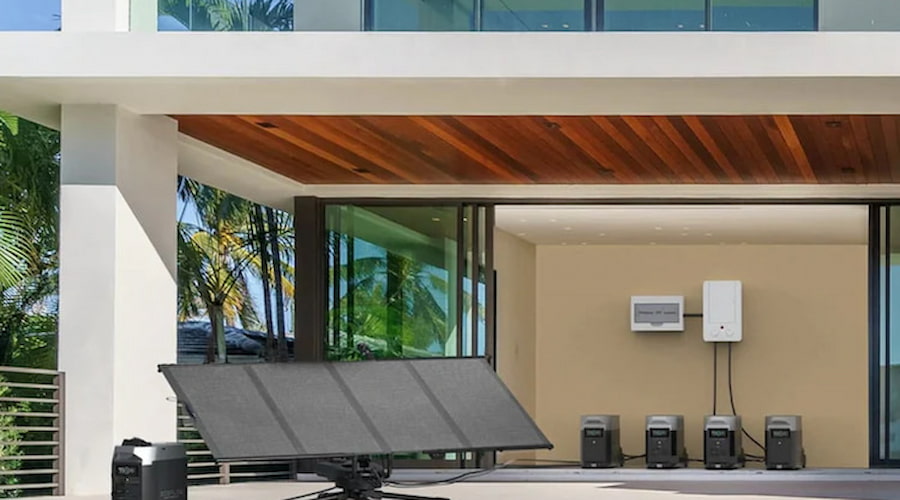Disaster Recovery Payment Explained: Eligibility, Amounts & How to Apply
Is the Disaster Recovery Payment taxable?
If you’ve been caught up in the floods or storms this year—whether it was the heavy rains in Western Queensland, the aftermath of Ex-Tropical Cyclone Alfred, or the North Queensland flooding—you’re probably still finding your feet.
Disasters can throw everything into chaos, from your home and belongings to your income and sense of security. That’s why the Australian Government offers a Disaster Recovery Payment to help you get through those first tough days.
In this guide, we’ll break down whether you’re eligible for this financial aid, how much you might receive, and the steps to apply. We’ve also included some tips to help you start rebuilding once the worst has passed, so read till the end.
What Is the Disaster Recovery Payment?
The Australian Government Disaster Recovery Payment (AGDRP) is a non-taxable lump sum payment designed to provide immediate financial assistance to individuals and families who have been significantly impacted by a declared major disaster.
This payment aims to help cover essential expenses during the initial recovery period following events such as storms, flooding, bushfires, cyclones, and monsoons.
As of 2025, the AGDRP has been activated for several disasters, including:
Western Queensland Heavy Rain and Flooding (March 2025)
Ex-Tropical Cyclone Alfred in both Queensland and New South Wales (March 2025)
North Queensland Floods (January–February 2025)
Who Can Get the Disaster Recovery Payment?
To be eligible for the AGDRP, you must meet the following criteria:
Residency: You are an Australian resident or hold an eligible visa.
Age: You are at least 16 years old at the time of the disaster.
Adverse Impact: You have been adversely affected by a declared major disaster.
Being “adversely affected” typically means that, as a direct result of the disaster:
You were seriously injured.
You are an immediate family member of someone who died or is missing.
Your principal place of residence was destroyed or sustained major damage.
Your major assets were destroyed or suffered significant damage.
You are the principal carer of a dependent child who has experienced any of the above.
How Much Can You Receive from a Disaster Recovery Payment?
If you’ve been impacted by one of the 2025 declared events and are eligible to claim disaster relief, you can receive a lump sum payment to help you through the initial recovery period:
$1,000 for each eligible adult
$400 for each eligible child under 16
This payment is tax-free and is not income-tested, which means you can claim it regardless of your income or savings and do not need to declare it in your tax return. It’s designed to provide fast, one-off financial support to help with urgent needs—whether that’s replacing essential items, covering temporary accommodation, or just easing the pressure while you sort things out.
How Do You Apply for Disaster Recovery Payment?
Once an event is declared a major disaster, you will typically have six months to claim Disaster Recovery Payment. Make sure to apply before these deadlines:
Western Queensland Heavy Rain and Flooding (March 2025) - Claim by: 14 October 2025
Ex-Tropical Cyclone Alfred in QLD (March 2025) - Claim by: 18 September 2025
Ex-Tropical Cyclone Alfred in NSW (March 2025) - Claim by: 13 September 2025
North Queensland Floods (Jan–Feb 2025) - Claim by: 17 September 2025
Here’s how the process works:
1. Set Up Your Online Accounts
If you haven’t already, create a myGov account and link it to your Centrelink online account.
2. Submit Your Claim
Once your accounts are set up:
Sign in to your myGov account.
Select ‘Apply for Disaster Recovery Payment.’
Answer the eligibility and claim questions.
Submit your claim.
3: After You Claim
Once you’ve submitted your application, you’ll get confirmation via:
SMS
myGov inbox message
Or a letter
You can track the progress of your claim by logging in to your myGov account and selecting Payments & Claims, or through the Express Plus Centrelink app.
If Centrelink needs more information, they may call you directly. Try to respond quickly so your claim can be processed without delays.
4. Need Assistance?
If you have questions about the eligibility criteria or require help with your claim:
Call the Australian Government Emergency Information Line at 180 22 66.
If you need an interpreter, let them know, and they will arrange one for you.
For Aboriginal or Torres Strait Islander Australians, you can also call and speak to the Indigenous call centre for assistance.
How to Rebuild Your Life After a Disaster?
Recovering from a natural disaster can be a long and emotional journey. It takes time, planning, and community support. Here’s how you can start to move forward, one step at a time.
Prioritize Your Wellbeing
Experiencing a disaster can be traumatic. It’s normal to feel overwhelmed, anxious, or even numb. Engaging in activities that promote calmness, such as mindfulness or gentle exercise, can be beneficial.
Connecting with trusted individuals to share your experiences can also aid in processing emotions. If distress persists, consider seeking support from mental health professionals or organizations like Beyond Blue (1300 22 4636) or Lifeline (13 11 14).
Assess and Document Property Damage
Once it’s safe, inspect your property for damage. Take clear photographs and detailed notes of all affected areas and items. This documentation is crucial for insurance claims and potential government assistance.
Engage with Your Insurance Provider
Contact your insurance company promptly to initiate the claims process. Understand the specifics of your coverage, including provisions for temporary accommodation or emergency repairs. Before undertaking any repairs, ensure they are authorized by your insurer to avoid complications.
Seek Financial Guidance
Disasters can strain finances. Free financial counseling services, such as the National Debt Helpline (1800 007 007), can assist in budgeting, managing debts, and exploring available financial aid.
For Indigenous Australians, the Mob Strong Debt Helpline (1800 808 488) offers culturally appropriate support.
Access Government and Community Support
Besides the federal government, your state and territory government plus various organizations also provide assistance post-disaster:
Queensland Government: Visit the Queensland Reconstruction Authority (QRA) or the QLD Disaster Support and Recovery Portal to find information about grants, emergency housing, and rebuilding support.
New South Wales Government: Through Service NSW, affected residents can access financial assistance, small business recovery help, clean-up programs, and mental health services.
Australian Red Cross: Provides community recovery programs and emotional support.
Disaster Relief Australia: Mobilizes volunteers for cleanup and rebuilding efforts.
Architects Assist: Offers pro bono architectural services for rebuilding homes.
Rebuild at Your Own Pace
Reconstruction is not just about physical structures but also about restoring a sense of normalcy. Take time to draft a disaster recovery plan and make informed decisions about rebuilding. Engage with local authorities, builders, and community groups to ensure your new home meets safety standards and suits your needs.
Prepare for Future Disasters
Once the immediate recovery is underway and life starts to regain some stability, it’s a good time to think about how you can prepare for tropical cyclones, floods, or other disasters in the future. Here are a few proactive steps:
Create or update an emergency plan – Know what to do, where to go, and how to stay in touch if another disaster strikes.
Build a ready-to-go emergency kit – Include essentials like water, medication, important documents, chargers, and basic supplies.
Review your insurance coverage – Make sure your home and contents are adequately insured, and check what natural disasters are included in your policy.
Invest in home backup power – During floods, storms, or cyclones, the power can go out for hours—sometimes days. Having a home backup generator means you can keep essentials running: your fridge, lights, communications, and medical devices.
You generally have three main backup power options:
Fuel-powered generators – Common and affordable, but noisy, require petrol or diesel, and can’t be used indoors due to carbon monoxide risk.
Home battery backup solutions – Silent, safe for indoor use, and often rechargeable from the grid or solar.
Solar generators – A combination of solar panels and battery portable power stations. Great for extended outages, and a clean, renewable option.


If you’re looking for a powerful and reliable battery backup solution, the EcoFlow DELTA Pro Portable Power Station is one of the best all-in-one systems available. With a 3600W continuous output (and 7200W surge capacity), it can power just about anything in your home, including heavy-duty appliances like your fridge, air conditioner, washing machine, or dryer.
It features a massive 3.6kWh base capacity, which can be expanded all the way up to 25kWh. That means it’s not just for emergencies—it’s a serious long-term backup system. You can keep essential appliances and devices running for hours or even days, depending on your usage.
One of its best features is that it can be connected directly to your home’s circuits. With the Smart Home Panel, the DELTA Pro can automatically switch over during an outage—usually within 20 ms—so your lights and appliances stay on with barely a flicker.


Charging is incredibly fast and flexible. You can fully charge the DELTA Pro in just 1.9 hours via a standard wall outlet or use multiple sources at once—including EV charging stations and solar input—for even faster top-ups. When paired with EcoFlow’s high-efficiency solar panels, it supports up to 1600W of solar input, providing clean energy for those prolonged blackouts.
Conclusion
When disaster hits, it’s easy to feel overwhelmed—but you don’t have to go through it alone. The Disaster Recovery Payment is just one of the ways the government helps you take back a bit of control when everything feels upside down. If you were affected, check your eligibility and put in a claim promptly. Recovery is a gradual process, so seek help and take the time you need to rebuild and carry out home safety preparation for electrical storms, floods, or any other future disaster that might come your way.
FAQs
Is the Disaster Recovery Payment taxable?
No, the Australian Government Disaster Recovery Payment (AGDRP) is not taxable. You don’t need to include it in your tax return, and it won’t affect your existing Centrelink payments.
Can I receive both the Disaster Recovery Payment and Allowance?
Yes, you can receive both the Disaster Recovery Payment and the Disaster Recovery Allowance, as long as you meet the eligibility criteria for each. The payment is a one-off lump sum, while the allowance is an ongoing income support payment for those who’ve lost work due to the disaster.
How long to receive Disaster Recovery Payment after applying?
Processing times can vary. Some applicants have reported receiving the payment within hours of applying, while others may experience delays of a few days, especially during periods of high demand. Services Australia aims to process claims as quickly as possible, but the exact timing can depend on factors like application volume and the need for additional information.